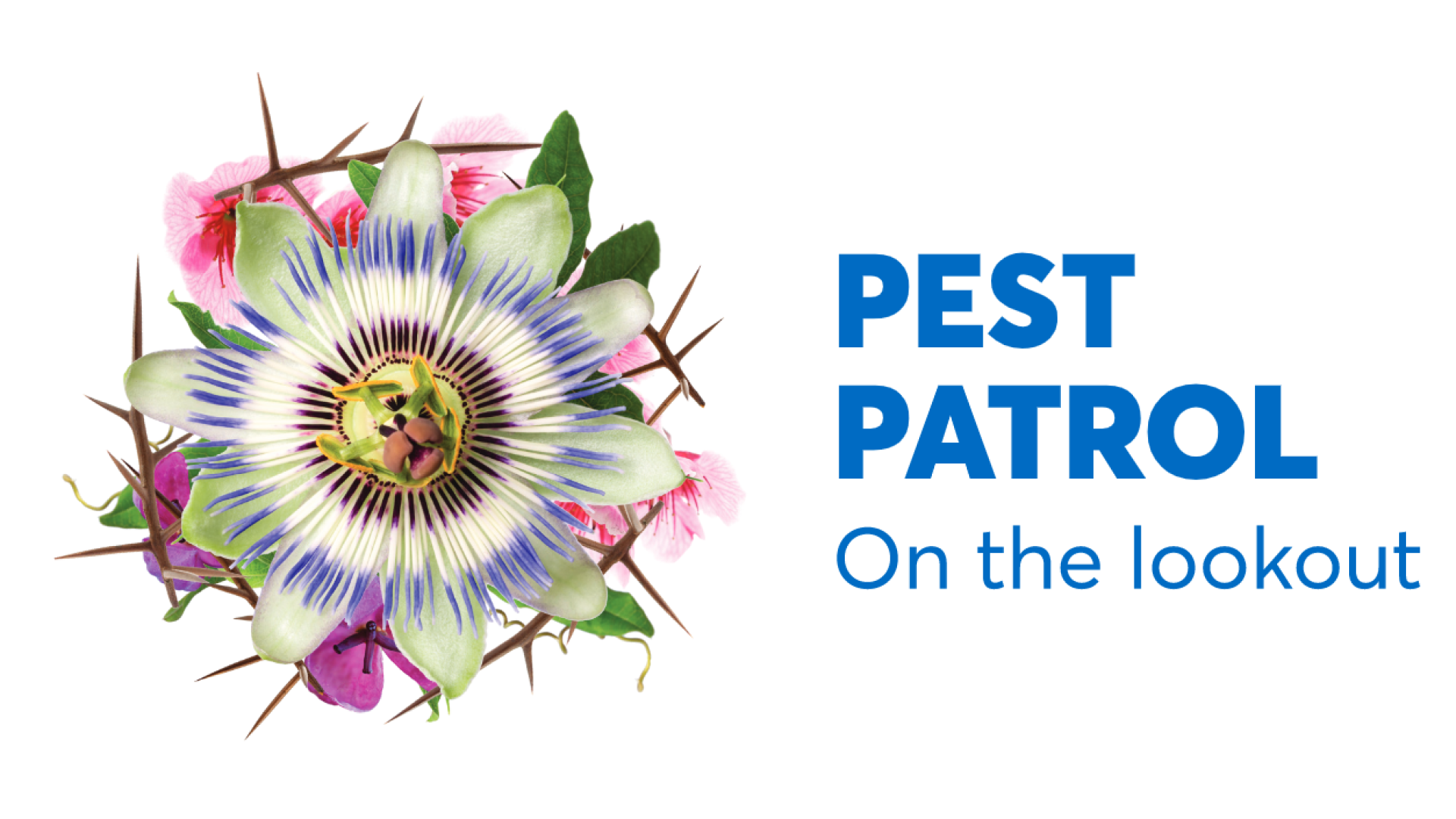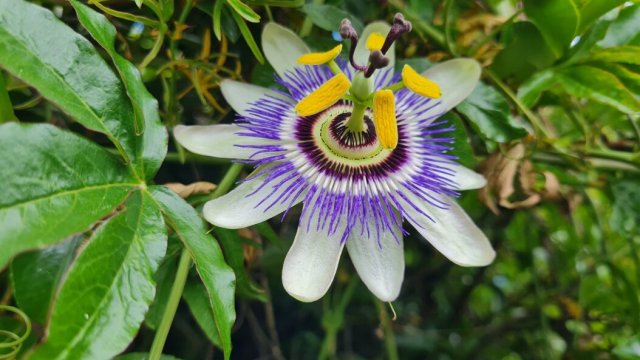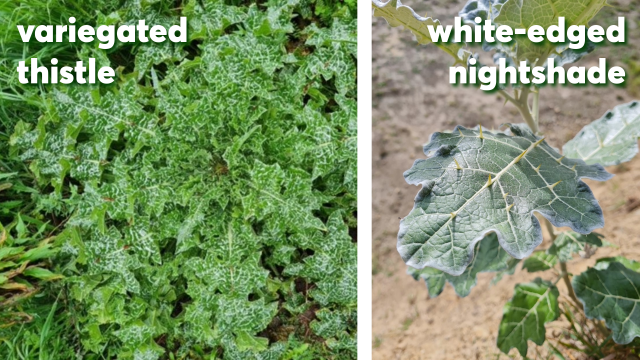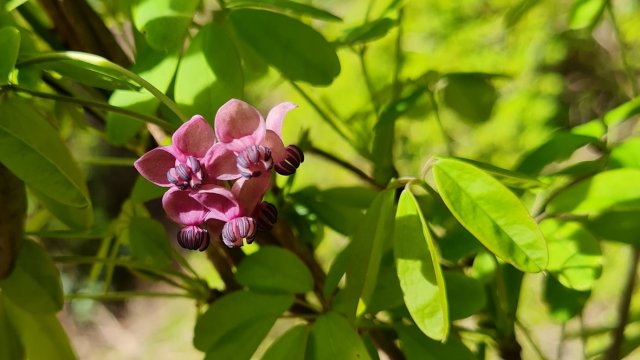Pest Patrol: Variegated thistle
20/09/2022 5:08pm
This month we're on the lookout for variegated thistle (Silybum marianum). Variegated thistle is a conspicuous, spiny thistle most often found in pasture and wasteland. The stems can grow up to 2.5 metres high, and the plant itself can form dense clumps in excess of 1 metre in width.
The leaves have white veins and blotches that give the leaves a variegated look.
Large, single purple flowers are visible in November through to January, producing a large number of dark, heavy seeds.
The seed is spread by machinery, animals and birds. The seeds can remain viable for up to 10 years, making eradication a long-term task requiring both patience and persistence.
It is primarily a pest in pasture areas as:
- thistle growth suppresses the growth of pasture grasses
- high nitrate levels in pest plants growing on nitrogen-rich soils can be toxic to livestock, especially cattle
- spines on the leaves and stems can cause injury to people and animals
- dense clumps impede stock movement.
Nelson and Tasman only have a few small pockets of variegated thistle due to the efforts of rural landowners over the last 30 years. Landowners with variegated thistle on their land are reminded that there is a requirement to destroy all adult and juvenile plants before flowering each season.
Variegated thistle is very distinctive due to its large size and striking white patterning. The only similar species that could be easily confused is Winged thistle (Carduus tenuiflorus). It is much smaller and has cream-coloured patterning on the leaves and is common in Nelson.

If you see this plant or require further advice or information on variegated thistle and other biosecurity threats, please contact Council’s biosecurity officer on biosecurity@ncc.govt.nz or call 03 546 0200.





